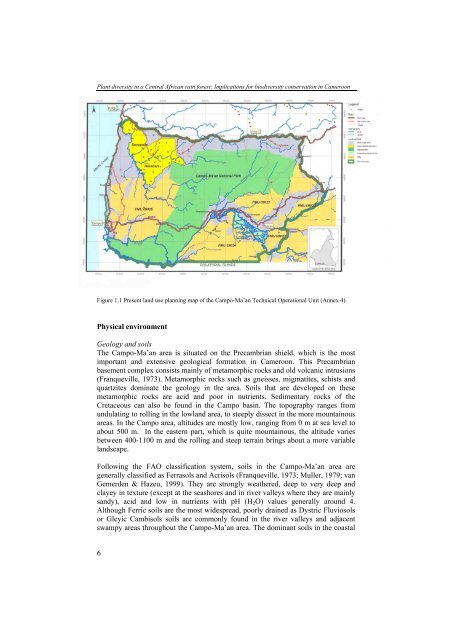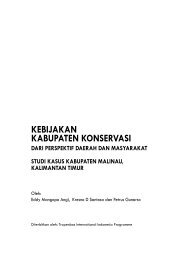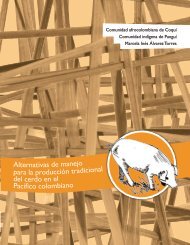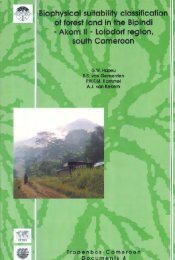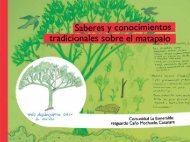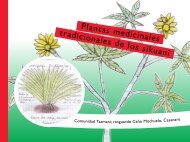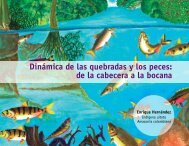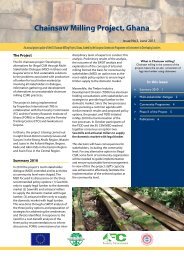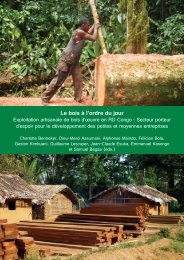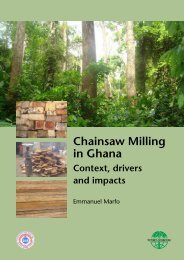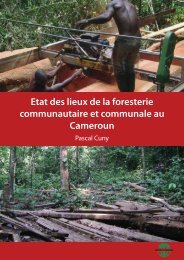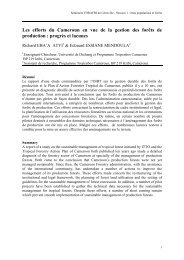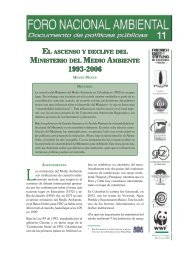Download the publication - Tropenbos International
Download the publication - Tropenbos International
Download the publication - Tropenbos International
Create successful ePaper yourself
Turn your PDF publications into a flip-book with our unique Google optimized e-Paper software.
Plant diversity in a Central African rain forest: Implications for biodiversity conservation in Cameroon<br />
Figure 1.1 Present land use planning map of <strong>the</strong> Campo-Ma’an Technical Operational Unit (Annex 4).<br />
Physical environment<br />
Geology and soils<br />
The Campo-Ma’an area is situated on <strong>the</strong> Precambrian shield, which is <strong>the</strong> most<br />
important and extensive geological formation in Cameroon. This Precambrian<br />
basement complex consists mainly of metamorphic rocks and old volcanic intrusions<br />
(Franqueville, 1973). Metamorphic rocks such as gneisses, migmatites, schists and<br />
quartzites dominate <strong>the</strong> geology in <strong>the</strong> area. Soils that are developed on <strong>the</strong>se<br />
metamorphic rocks are acid and poor in nutrients. Sedimentary rocks of <strong>the</strong><br />
Cretaceous can also be found in <strong>the</strong> Campo basin. The topography ranges from<br />
undulating to rolling in <strong>the</strong> lowland area, to steeply dissect in <strong>the</strong> more mountainous<br />
areas. In <strong>the</strong> Campo area, altitudes are mostly low, ranging from 0 m at sea level to<br />
about 500 m. In <strong>the</strong> eastern part, which is quite mountainous, <strong>the</strong> altitude varies<br />
between 400-1100 m and <strong>the</strong> rolling and steep terrain brings about a more variable<br />
landscape.<br />
Following <strong>the</strong> FAO classification system, soils in <strong>the</strong> Campo-Ma’an area are<br />
generally classified as Ferrasols and Acrisols (Franqueville, 1973; Muller, 1979; van<br />
Gemerden & Hazeu, 1999). They are strongly wea<strong>the</strong>red, deep to very deep and<br />
clayey in texture (except at <strong>the</strong> seashores and in river valleys where <strong>the</strong>y are mainly<br />
sandy), acid and low in nutrients with pH (H2O) values generally around 4.<br />
Although Ferric soils are <strong>the</strong> most widespread, poorly drained as Dystric Fluviosols<br />
or Gleyic Cambisols soils are commonly found in <strong>the</strong> river valleys and adjacent<br />
swampy areas throughout <strong>the</strong> Campo-Ma’an area. The dominant soils in <strong>the</strong> coastal<br />
6


